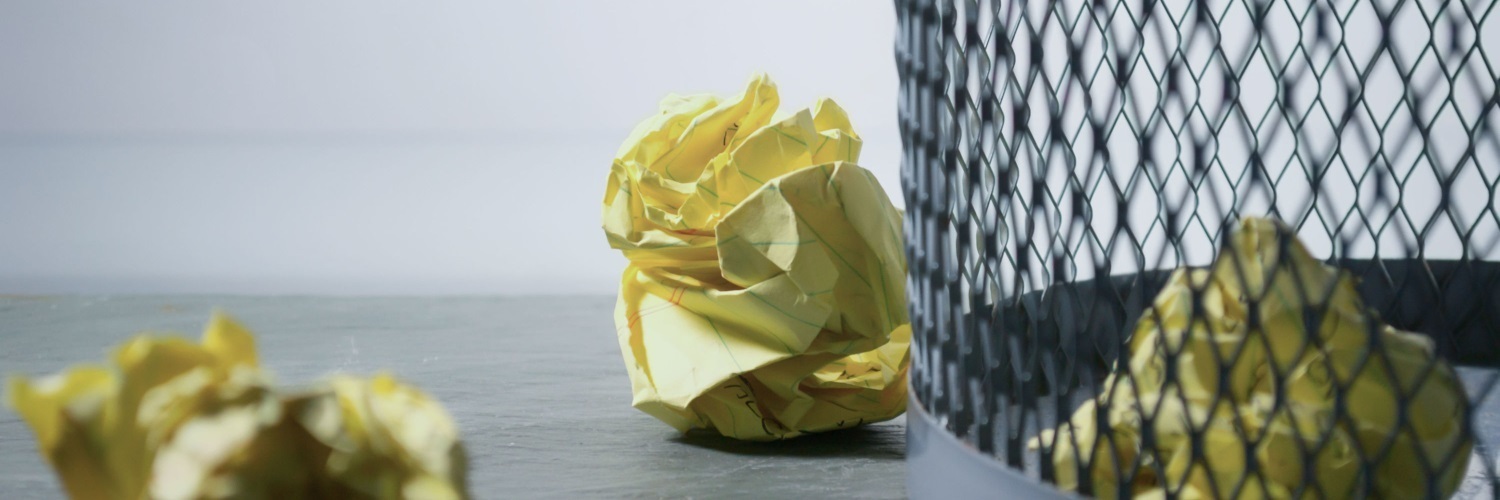Teach Kids How to Respond To Mistakes

We all make mistakes
I’ve been thinking a lot lately about mistakes. I’m not talking about the big-ticket, life-altering kind, but rather the day-to-day, garden variety, the mistakes that we all make in the process of learning something new. And make no mistake about it: as we learn, it’s inevitable that we will make mistakes, take wrong turns, and/or find ourselves stuck somewhere along the way.
And the fact that mistakes are normal can be really hard for kids to understand, since they don’t have the years of experience in learning that we parents do. We need to help our kids see that making mistakes in the pursuit of learning isn’t actually the end of the world! In fact, when we learn something new and challenging, mistakes are not just normal, they’re important, since a key part of the learning process is making mistakes and learning from them. Knowing that mistakes happen, and that we can just learn from them and keep on trying, can help kids to take that first, scary step on their problem-solving path!
The need for a useful response to mistakes
My daughter is almost 8, and with me as her mother, she knows that she has to make a valiant attempt to do her work on her own first. Thankfully, she’s willing to take a stab at whatever is in front of her, and see what happens. Then she’ll bring me her work to look over, and I’ll say something like “I see a mistake in #2”. And then she MELTS. I’m sure you have seen this in your own kids: a willingness to try, and being okay with the idea of making a mistake, but when a mistake actually has the nerve to appear, the reaction that follows is one of pure horror. And so, I have come to realize that my daughter’s mere willingness to make the mistake isn’t going to cut it: that’s only half the battle. I also have to help her learn how to respond to a mistake in a useful, productive (and much less dramatic) manner.
When a mistake happens, the rubber hits the road, and kids get to stand nose-to-nose with imperfection, which doesn’t feel great. So, how do we help kids learn to respond to mistakes in a way that actually facilitates learning, and to overcome the feeling of deflation that can come with making a mistake? In my house, we’ve been working on a two-part approach that’s been quite helpful.
The first response to a mistake: breathe!
Making a mistake doesn’t feel good. And for my daughter, it causes an immediate feeling of panic in her perfectionist heart. So we’ve had to work on managing her emotional response to mistakes first. We have to remind our kids, right at their moment of frustration, that mistakes are normal, that everything is still right in the world, and that they will be able to work through it.
Before we can move on from the mistake, often kids need to take a deep breath, and simply hit the pause button for a bit. For example, if my daughter suddenly becomes paralyzed by a mistake, I ask her to pause for a moment, take a breath, and look around the room to see if anything is different(!). The first time I asked her this, she looked at me like I was crazy. The point I make with her is that her mistake didn’t cause walls to crumble, paint to peel, the sky to fall, or any other catastrophe. We are all still here, healthy, and in one piece, in spite of what feels like a world-ending math mistake. It’s not the end of the world!
Of course, every family is different - this is what works for mine. Alternately, you might suggest that your child move on to something else and come back to the mistake with a fresh pair of eyes, either after a few minutes away, or longer, depending on your child, and what works best for them (for more on this, see our blog here). The goal here is to take a moment to regroup, and to keep perspective on the scale of the mistake in the grand scheme of life; get there in whatever way that makes the most sense for your kids.

The second response: look!
Once the panic is in check, and we can all breathe normally, I encourage my daughter to actually look at her work. I ask her some questions, and I’ve been trying really hard to ask her the same questions every time, in the same order, so that in time she’ll remember them, and be able to ask herself the same questions when needed:
- Look back at your work. Do you see any arithmetic errors? Does all the work that you did look correct? Do you notice anything different from what you usually do?
- Look back at the question: Do the answer you have and the work you did match what the question asked for? Is there information you missed in the question the first time around, that maybe would help you try again?
- Look at your result: Is your answer in the ballpark? Is it close, or far off, to what seems reasonable? Do you notice anything strange about your result?
- Look at your process: How did you approach the problem? Does that approach still make sense? Could you try it another way?
I also stop the questions wherever we are on the list when she has resolved her mistake (there will be plenty of chances for the other questions to arise in other circumstances!).
What happens next?
Once I’ve helped my daughter look back at her work, there are a few different things that might happen. If there was an arithmetic error or a process mistake that jumped right out (usually from asking the questions in the first two bullets) she’ll say “Oh! I know what happened…” and she’s off to the races fixing her error. Honestly, I often try to ask her what happened at this point, and she no longer hears me, she’s so busy jumping headfirst into whatever she was working on before.
If the mistake is a little harder to spot, likely it’s something we find using questions in the last two bullets. When we talk about ballpark answers and estimating what the answer should be, it often prompts us to take a harder look at the units in the problem, or the way calculations were done, as those are some of the things that can mess with the scale of an answer. If that’s no help, my daughter will often choose to start anew on a fresh sheet of paper, with “new eyeballs” as she says (sometimes this requires that she puts on sunglasses…). Once she’s starting fresh, she (once again) totally stops hearing me, and is back to figuring out what she wants to do to solve the problem. When she’s finished, maybe she’s got it, and maybe she doesn’t, but if she doesn’t, we’ll have the whole conversation again, and that’s okay!
Slowly but surely, we are working our way to a more reasoned response to mistakes. I know that there will always be times where my kids make mistakes in math and absolutely freak out because of them. We all make mistakes, and we all have times where we panic as a result - that’s normal. But I am trying to help my kids have a process to follow when they find themselves sitting with a mistake, and need to figure out a fix. So far, focusing on managing the emotional response, and then really looking at what has been done, has helped my kids move past their errors. I even caught my daughter the other day saying to her brother, “It’s just a mistake. Take a breath. When you’re calm I’ll help you look at it again!”
Find this post interesting? Follow the blog using the link at the top of the page to get notified when new posts appear!
Need tasks to help your kids practice making mistakes (and surviving)? Check out our Mini-Challenge sets on Teachers Pay Teachers!!



